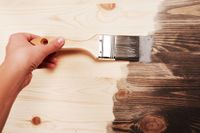Why Sanding & Refinishing Are Beneficial Parts of Historic Floor Restorations

Historic floor restoration is a delicate process that requires care, skill, and knowledge. It also comes with challenges like uneven foundations and rotting wood. If you’re looking for a way to preserve or restore the flooring in an old building, it’s important to know the benefits of sanding and refinishing. When done correctly, these strategies can result in like-new conditions.
Benefits of Floor Sanding
Sanding is an important step for smoothing out wood. Experts carefully remove the bumps and dips that result from warping over long periods. They also strip back old layers of grime, varnish, and wax. Depending on the condition of the floor, they may not be able to use power tools but will have to work by hand.
Because every historic floor restoration is different and presents distinct challenges, professional hardwood floor specialists must complete this job. It requires a large degree of finesse, because improper sanding may cause more damage rather than fixing it. The workers must know when to stop before they wear the floor too thin.
Benefits of Floor Refinishing
 After sanding removes the imperfections, refinishing helps restore the floor’s original color and beauty. It creates a gleaming surface that covers scuffs and scratches while highlighting the antique wood. New layers of finish also provide several forms of protection. First, they create a buffer between the floor and dirt or other harmful debris. They also seal the wood from moisture, which can cause warping and discoloration and shield the surface from direct sunlight, which may cause fading.
After sanding removes the imperfections, refinishing helps restore the floor’s original color and beauty. It creates a gleaming surface that covers scuffs and scratches while highlighting the antique wood. New layers of finish also provide several forms of protection. First, they create a buffer between the floor and dirt or other harmful debris. They also seal the wood from moisture, which can cause warping and discoloration and shield the surface from direct sunlight, which may cause fading.
In Rhode Island and southeastern Massachusetts, American Floors provides a range of services to assist with historic floor restoration projects. These include installation, sanding, finishing, and general repairs. This company’s philosophy is to do jobs right the first time, saving their customers money and time. Contact them online or call (401) 433-0530 today for more information.
About the Business
Have a question? Ask the experts!
Send your question

